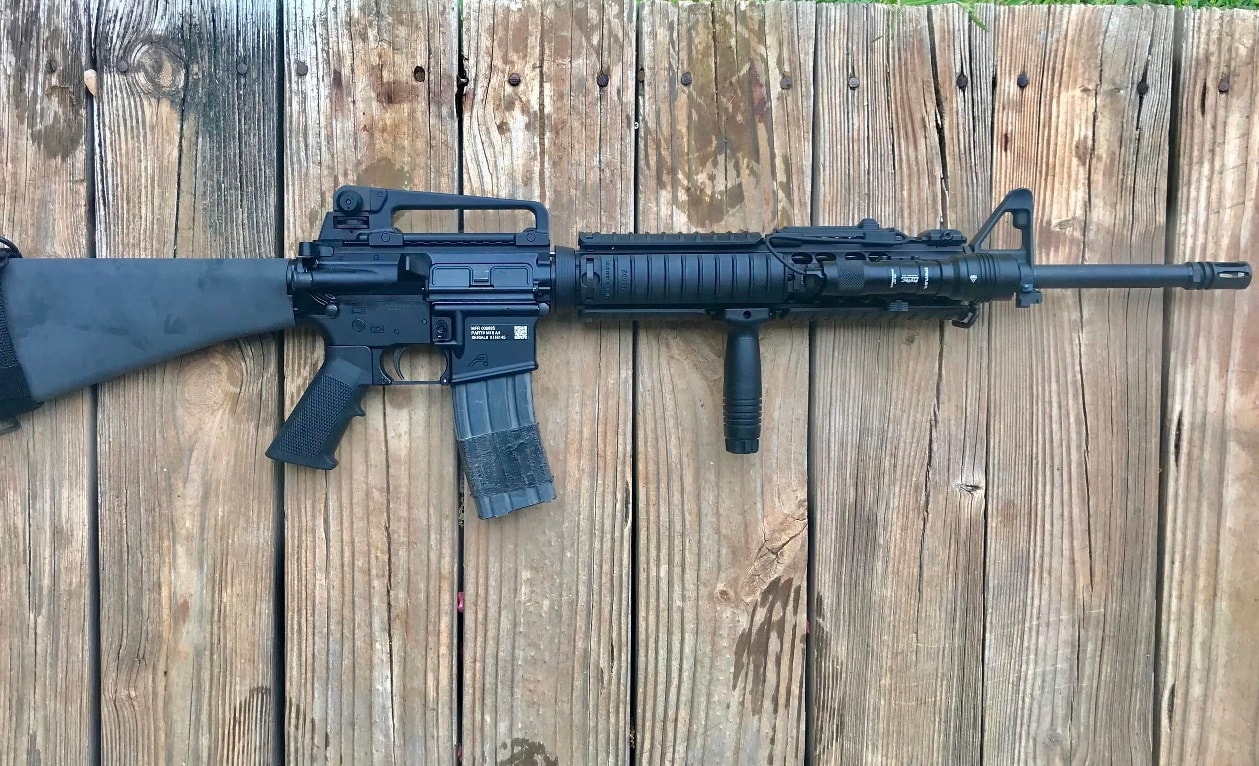It Took Until 2015 for the Marines to Officially Switch Away from the M16A4: It never made sense. During Iraq and Afghanistan, U.S. Army soldiers were carrying the M4 with assorted accessories and the Marines still had M16A4s. The Marine Corps finally switched over in 2015. This decision came from the top – the Commandant of the Marine Corps listened to the complaints and had seen enough of the M16A4 and made the change.
Let’s take a deeper dive into the marines’ difficult relationship with the M16A4.
The M16A4 Was Finicky
The M16A4 was mostly accurate and easy to disassemble and reassemble, but it could sometimes malfunction or jam. The weapon was finicky due to the environment of Iraq and Afghanistan. It did not take much dust to keep it from firing. That meant the Marines had to clean their weapons regularly.
The M16 Was Just Too Old
The M16 baseline rifle was originally developed in 1956 and proliferated to the grunts serving in Vietnam. Numerous militaries around the world took up the M16 and 8 million rifles have been produced over the years.
New Warfare Required Changes
After 9/11 and the Cold War, the fight was changing, which was making the M16A4 obsolete.
Unlike the conventional force-on-force combat mission during Operation Desert Storm, the Second Gulf War quickly became a counter-insurgency conflict after the initial invasion and death of Saddam Hussein. Now there was urban fighting against militants who could disappear into the general population. Close-quarter combat became a daily struggle. Tactics and techniques in close-quarters became difficult with the M16A4.
Long Barrel Had Disadvantages
This is where the long 20-inch barrel of the M16A4 became a liability. It was more difficult to clear a room with the longer weapon. The M16A4 did not have a collapsible stock like the M4 and that made it tricky to adjust for a different trigger pull. The marines’ body armor made it hard to fire for personnel with different body types. Marines traveling in vehicles and helicopters had to contend with the longer M16A4, which made things inconvenient.
The M16A4 had a different muzzle velocity than the M4 and had greater range, as the longer-barreled rifle was accurate out to 600 yards. The M16A4 was also heavier than the M4. The M16A4 has a three-round burst mode, which gave the weapon a less than desirable trigger pull.
The Army Had the M4 20 Years Ago
With all the downsides of the M16A4, you could imagine how frustrated the Marines would be seeing that the Army had switched over to the M4 many years ago. I enlisted as an Army military journalist and was attached to a Special Forces battalion in 2000. The Green Berets were already using the M4. By the time I became an officer in 2002, a light infantry air assault battalion I served in was issued the M4. So, the Army had the M4 almost 15 years before the marines officially shifted over to the M4. Like I said before, it just didn’t make sense.
Now the Taliban Are Using American Weapons
You still see the M16 around the world, most noticeably with the Taliban in Afghanistan. They looted the weapons and scads of 5.56 mm ammunition from the Afghan National Army that melted away and allowed the Taliban to take over the country this year.
Pay Attention to What the Marines on the Front Lines Want
Nonetheless, the larger takeaway from this article is that it is important to listen to marines in the field who are doing the fighting. The upper command echelons have to make quicker decisions about rifles and machine guns. Waiting over a decade to make necessary changes is unsatisfactory.
Now serving as 1945’s Defense and National Security Editor, Brent M. Eastwood, Ph.D., is the author of Humans, Machines, and Data: Future Trends in Warfare. He is an Emerging Threats expert and former U.S. Army Infantry officer. You can follow him on Twitter @BMEastwood.

